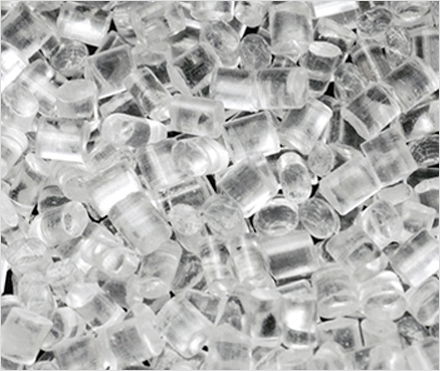Polyethylene (PE) crosslinking technology is one of the important means to improve its material properties. Adopted advanced techniques from the professional polymer compound manufacturer, it can greatly improve the cross linked polyethylene mechanical properties of PE, which not only significantly improves the comprehensive properties of PE, such as mechanical properties, environmental stress cracking resistance, chemical corrosion resistance, creep resistance, and electrical properties, but also significantly improves the temperature resistance grade, which can increase the heat resistance temperature of PE from 70 ℃ to more than 100 ℃, thus greatly broadening the application field of PE.
Cross linked polyethylene insulation refers to the crosslinking of polyethylene between its macromolecules under the action of high-energy rays or crosslinking agents, so as to improve its heat resistance and other properties. The long-term working temperature of the cable insulated with cross-linked polyethylene can be increased to 90 ℃, and the instantaneous short-circuit temperature it can withstand can reach
170-250℃。

From a manufacturer's perspective, cross-linked polyethylene is identified as either PEX or XLPE based on its intended application and the specific properties emphasized during production.
PEX is primarily produced for plumbing and heating applications. Crosslinked polyethylene manufacturers focus on creating tubing that is flexible, durable, and resistant to scaling and corrosion. The cross-linking process, achieved through methods like peroxide, silane, or irradiation, enhances these characteristics, making PEX ideal for hot and cold water distribution systems and radiant floor heating. Manufacturers also ensure compliance with relevant plumbing codes and standards such as ASTM F876, ASTM F877, and NSF/ANSI 61, which govern the safety and performance of PEX tubing.
In contrast, XLPE is targeted at electrical and industrial applications. The manufacturing process emphasizes the material's electrical insulating properties, thermal stability, and mechanical strength. This makes XLPE suitable for high-voltage cables, wiring, and other components requiring reliable insulation. Compliance with standards from organizations like the International Electrotechnical Commission (IEC) and Underwriters Laboratories (UL) is crucial, ensuring XLPE meets the stringent requirements for electrical insulation and performance under high-stress conditions.
ATP company also have other types of cross-linked polyethylene sale for you to choose from.
Cross-linked polyethylene has the following advantages:
Heat resistance: XLPE with reticular three-dimensional cross linked polyethylene structure has very excellent heat resistance. It will not decompose and carbonize below 200 ℃, the long-term working temperature can reach 90 ℃, and the thermal life can reach 40 years.
Insulation performance: XLPE maintains the original good insulation characteristics of PE, and the insulation resistance is further increased. The dielectric loss tangent is very small and is not affected by temperature.
Mechanical cross linked polyethylene mechanical properties properties: due to the establishment of new chemical bonds between macromolecules, the hardness, stiffness, wear resistance and impact resistance of XLPE are improved, which makes up for the defect that PE is easy to crack under environmental stress.
Chemical resistance: XLPE has strong acid, alkali, and oil resistance. Its combustion products are mainly water and carbon dioxide, which is less harmful to the environment and meets the requirements of modern fire safety.